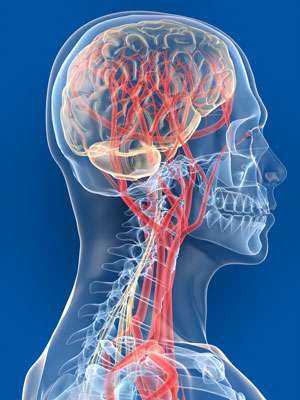Smooth muscle cells designed to mimic blood vessels in the brain may help to understand Alzheimer's

A technique to grow cells very similar to smooth muscle cells found in brain arteries, will make it easier to study the contribution of blood vessel disease to neurodegenerative conditions, a new study shows.
Smooth muscle cells are an important component of blood vessel walls, but surprisingly, they are organ-specific: for instance, smooth muscle cells in brain arteries differ from those in the coronary arteries.
The detailed attributes of these cells can be important in disease processes. Therefore to study diseases such as Alzheimer's disease (AD) or vascular dementia, the cells used in the laboratory need to closely match the cells in the living brain.
"It is very difficult to get access to brain tissue or specimens for research," says Christine Cheung from the A*STAR Institute of Molecular and Cell Biology. "So our lab's focus is to create organ-specific blood vessel cells."
Starting with human stem cells, Cheung's team set out to make brain vascular smooth muscle cells1. First they made a chemical cocktail that would drive the stem cells to become embryonic tissue that develops into the brain. "From there we were able to make the brain-specific smooth muscle cells," says Cheung.
The team then used these cells to study a process important in AD: the accumulation of a toxic substance known as amyloid-β that is mainly produced by nerve cells. Unlike their counterparts in other organs, healthy smooth muscle cells in brain arteries can remove and break down amyloid-β. Cheung suspects this is an important mechanism for lowering the 'amyloid burden' in the brain.
Her team showed that their newly created cells function well: they seem to process amyloid-β in the same way as cells naturally found in human brain arteries. And just like brain smooth muscle cells, their ability to remove amyloid-β, is markedly reduced in conditions of oxygen deprivation. So in this low-oxygen state, the cells provide a model for AD.
Cheung seized the opportunity to use the cells to test potential AD therapies. "We needed to create a good, robust and consistent measurement technique that we could use to assess existing pharmaceutical and nutritional compounds," she explains.
The proof-of-concept high-throughput assay developed by the team did just this: it can simultaneously test nearly 100 different compounds on oxygen-deprived cells to see whether amyloid processing is improved.
Cheung says that, to date, little attention has been paid to blood vessel pathology in Alzheimer's. These newly derived cells, however, will help clarify the role of blood vessels in the disease.
More information: Cheung, C., Goh, Y. T., Zhang, J., Wu, C. & Guccione, E. "Modeling cerebrovascular pathophysiology in amyloid-β metabolism using neural-crest-derived smooth muscle cells." Cell Reports 9, 391–401 (2014). dx.doi.org/10.1016/j.celrep.2014.08.065

















